
Healthcare diagnostics company Labcorp Holdings (NYSE:LH) announced better-than-expected revenue in Q2 CY2025, with sales up 9.5% year on year to $3.53 billion. Its non-GAAP profit of $4.35 per share was 4.5% above analysts’ consensus estimates.
Is now the time to buy Labcorp? Find out by accessing our full research report, it’s free.
Labcorp (LH) Q2 CY2025 Highlights:
- Revenue: $3.53 billion vs analyst estimates of $3.49 billion (9.5% year-on-year growth, 1% beat)
- Adjusted EPS: $4.35 vs analyst estimates of $4.16 (4.5% beat)
- Adjusted EBITDA: $598.9 million vs analyst estimates of $611 million (17% margin, 2% miss)
- Management raised its full-year Adjusted EPS guidance to $16.28 at the midpoint, a 1.4% increase
- Operating Margin: 11.2%, up from 9.2% in the same quarter last year
- Free Cash Flow Margin: 15.4%, up from 13.4% in the same quarter last year
- Organic Revenue rose 5.4% year on year (3.8% in the same quarter last year)
- Market Capitalization: $20.97 billion
"Labcorp had a very strong second quarter, delivering double-digit topline growth, while expanding margins across both segments," said Adam Schechter, chairman and CEO of Labcorp.
Company Overview
With over 600 million tests performed annually and involvement in 90% of FDA-approved drugs in 2023, Labcorp (NYSE:LH) provides laboratory testing services and drug development solutions to doctors, hospitals, pharmaceutical companies, and patients worldwide.
Revenue Growth
Reviewing a company’s long-term sales performance reveals insights into its quality. Any business can put up a good quarter or two, but many enduring ones grow for years. Unfortunately, Labcorp’s 3.3% annualized revenue growth over the last five years was tepid. This was below our standard for the healthcare sector and is a poor baseline for our analysis.
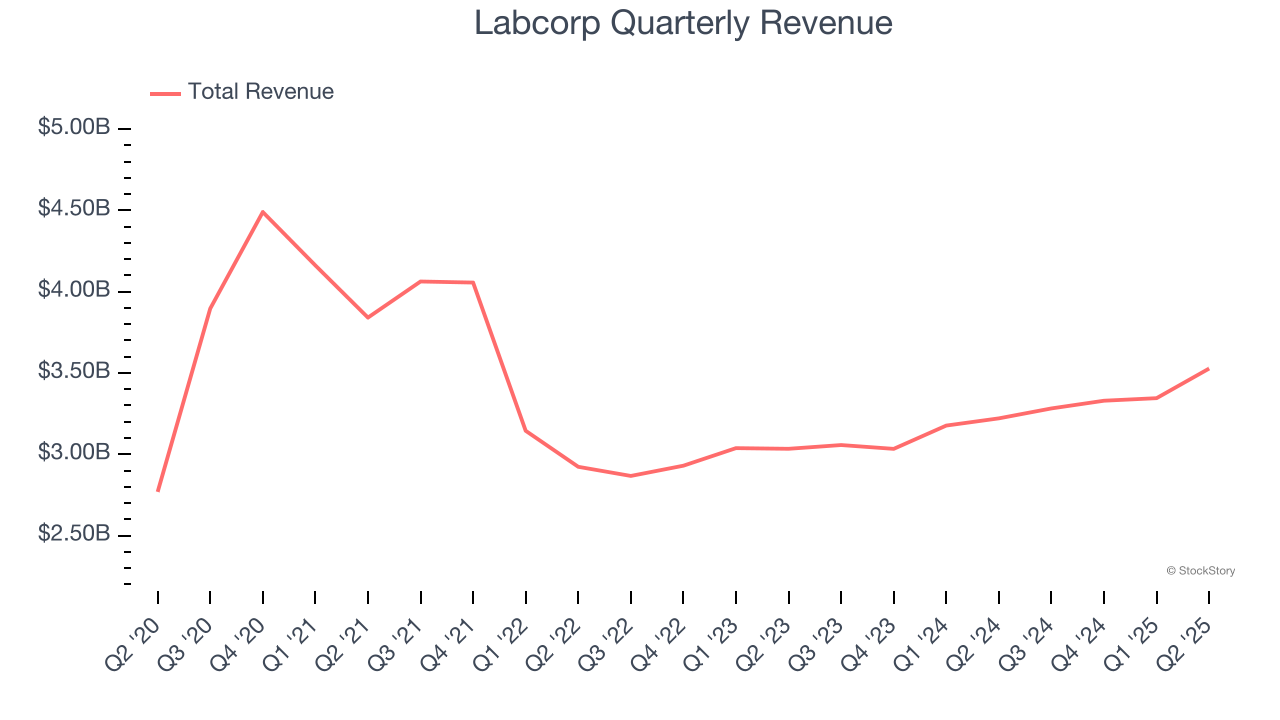
We at StockStory place the most emphasis on long-term growth, but within healthcare, a half-decade historical view may miss recent innovations or disruptive industry trends. Labcorp’s annualized revenue growth of 6.6% over the last two years is above its five-year trend, but we were still disappointed by the results. 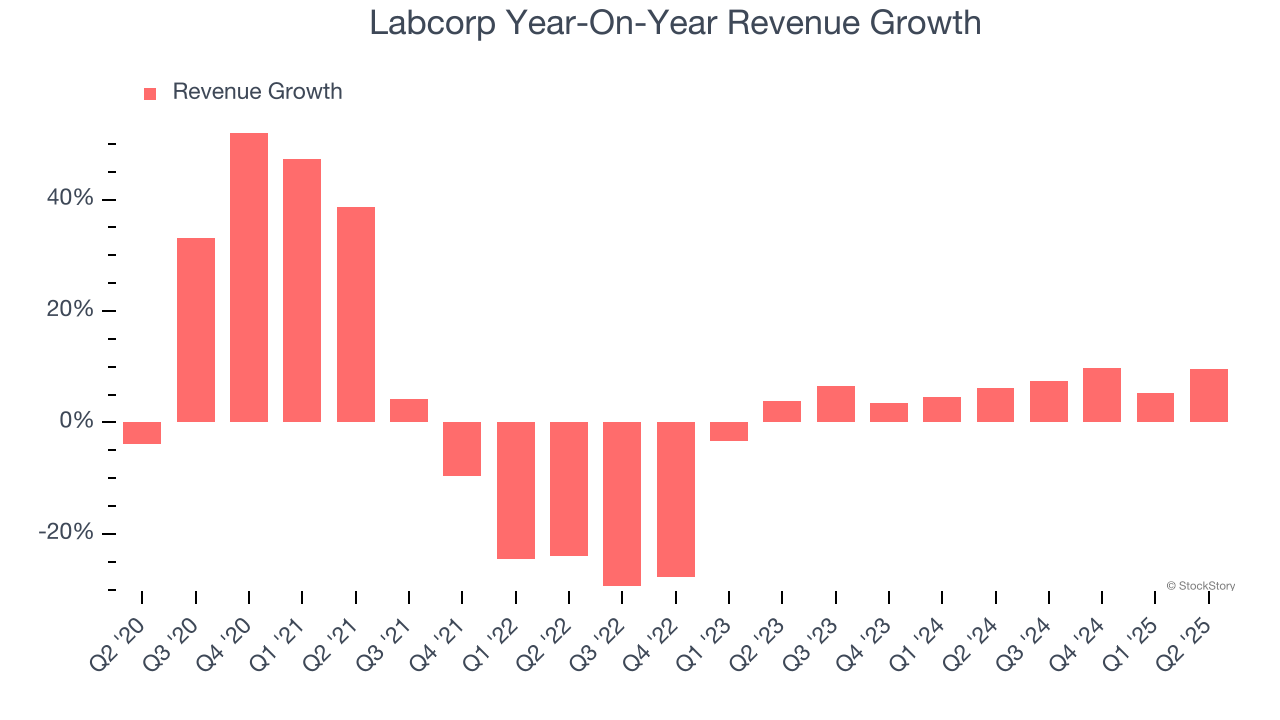
Labcorp also reports organic revenue, which strips out one-time events like acquisitions and currency fluctuations that don’t accurately reflect its fundamentals. Over the last two years, Labcorp’s organic revenue averaged 3.5% year-on-year growth. Because this number is lower than its normal revenue growth, we can see that some mixture of acquisitions and foreign exchange rates boosted its headline results. 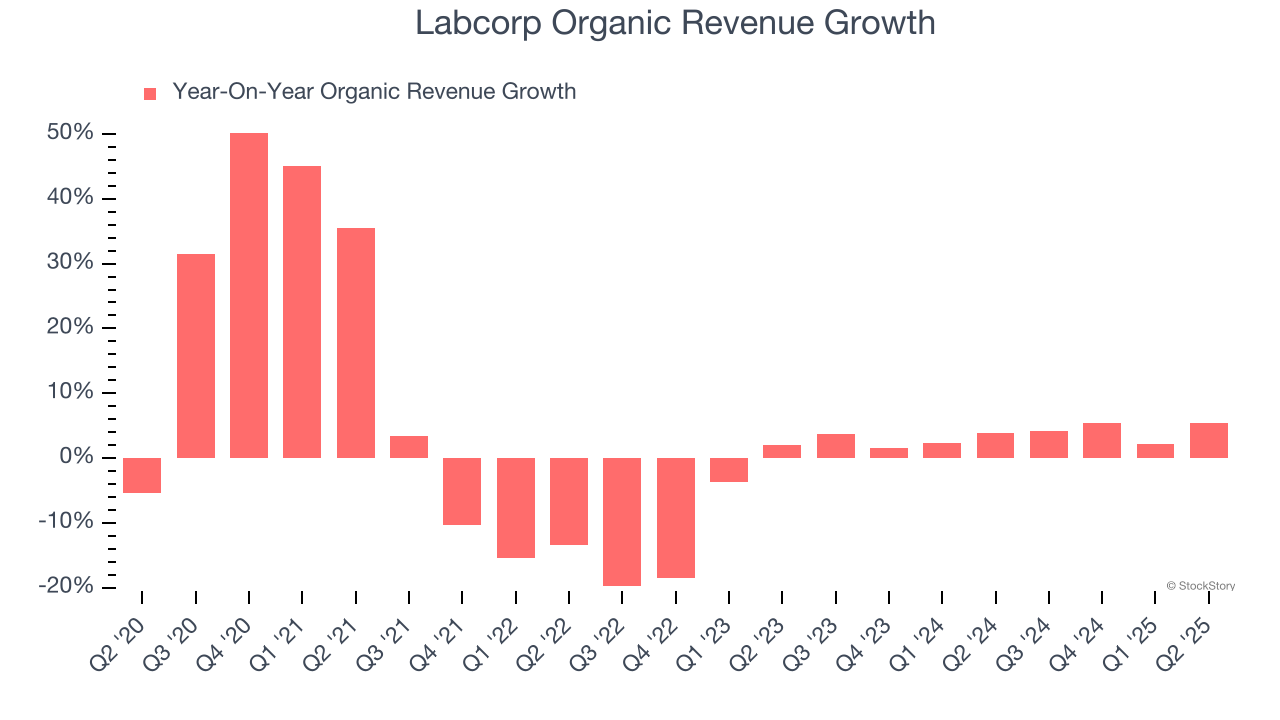
This quarter, Labcorp reported year-on-year revenue growth of 9.5%, and its $3.53 billion of revenue exceeded Wall Street’s estimates by 1%.
Looking ahead, sell-side analysts expect revenue to grow 5.7% over the next 12 months, similar to its two-year rate. This projection is above average for the sector and indicates its newer products and services will help sustain its recent top-line performance.
Software is eating the world and there is virtually no industry left that has been untouched by it. That drives increasing demand for tools helping software developers do their jobs, whether it be monitoring critical cloud infrastructure, integrating audio and video functionality, or ensuring smooth content streaming. Click here to access a free report on our 3 favorite stocks to play this generational megatrend.
Operating Margin
Labcorp has done a decent job managing its cost base over the last five years. The company has produced an average operating margin of 14.1%, higher than the broader healthcare sector.
Analyzing the trend in its profitability, Labcorp’s operating margin decreased by 16.2 percentage points over the last five years. This raises questions about the company’s expense base because its revenue growth should have given it leverage on its fixed costs, resulting in better economies of scale and profitability.
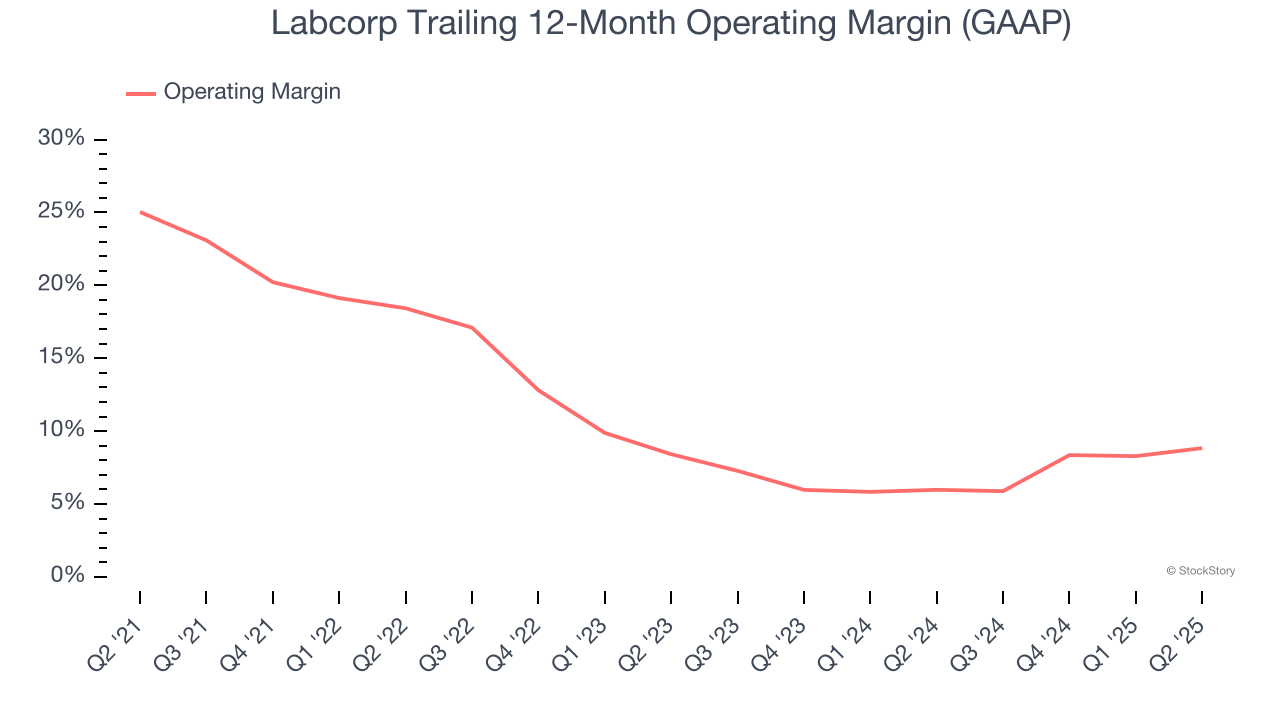
This quarter, Labcorp generated an operating margin profit margin of 11.2%, up 2 percentage points year on year. This increase was a welcome development and shows it was more efficient.
Earnings Per Share
Revenue trends explain a company’s historical growth, but the long-term change in earnings per share (EPS) points to the profitability of that growth – for example, a company could inflate its sales through excessive spending on advertising and promotions.
Labcorp’s EPS grew at a solid 7.2% compounded annual growth rate over the last five years, higher than its 3.3% annualized revenue growth. However, this alone doesn’t tell us much about its business quality because its operating margin didn’t improve.
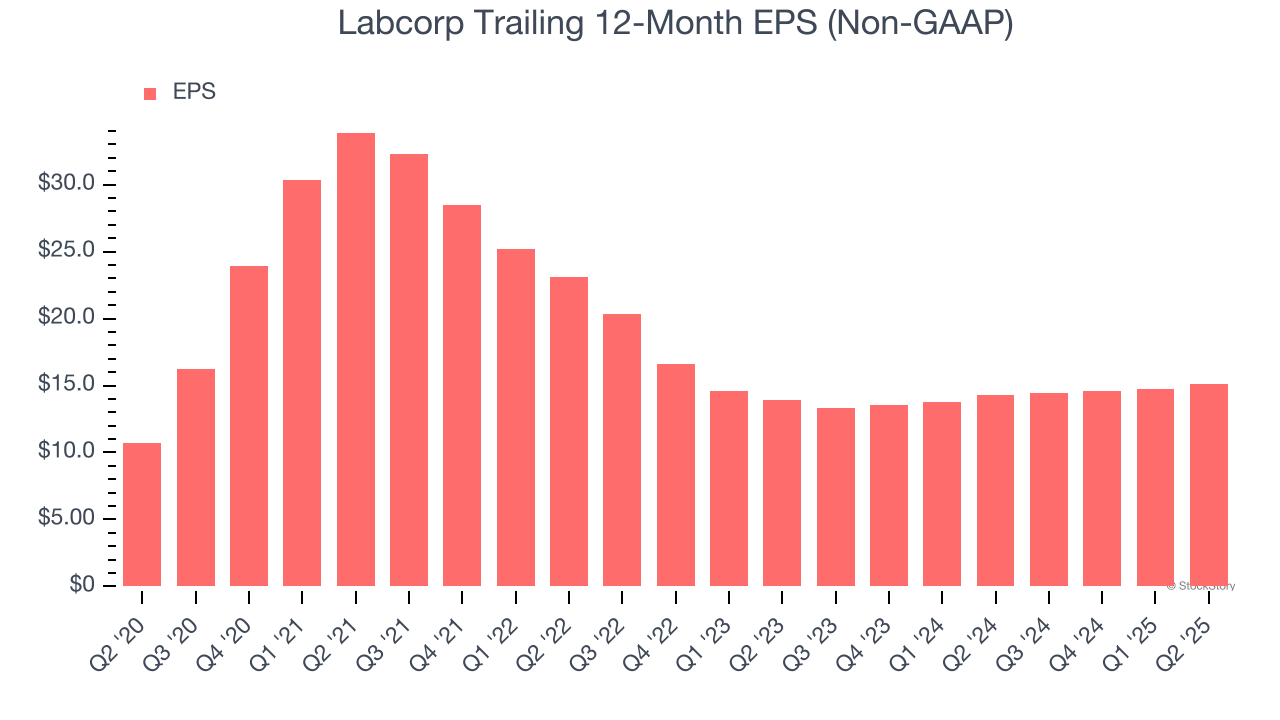
We can take a deeper look into Labcorp’s earnings quality to better understand the drivers of its performance. A five-year view shows that Labcorp has repurchased its stock, shrinking its share count by 14.1%. This tells us its EPS outperformed its revenue not because of increased operational efficiency but financial engineering, as buybacks boost per share earnings. 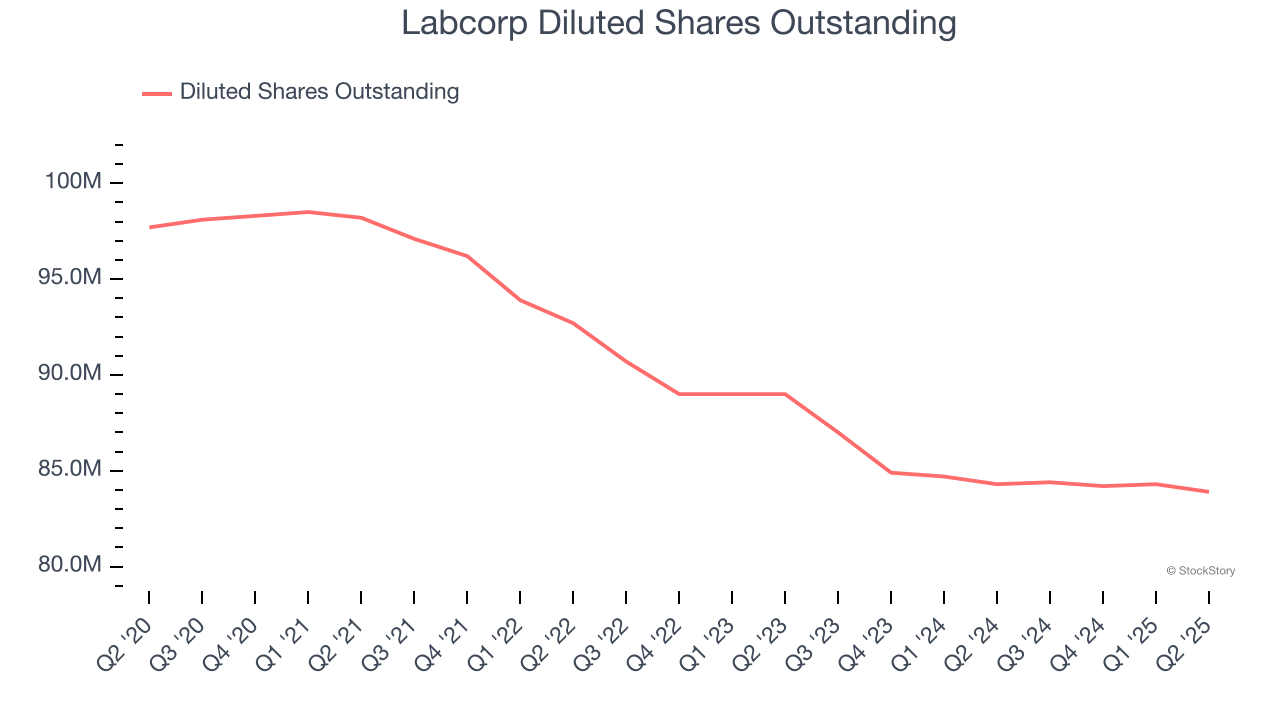
In Q2, Labcorp reported EPS at $4.35, up from $3.94 in the same quarter last year. This print beat analysts’ estimates by 4.5%. Over the next 12 months, Wall Street expects Labcorp’s full-year EPS of $15.14 to grow 10.9%.
Key Takeaways from Labcorp’s Q2 Results
It was good to see Labcorp narrowly top analysts’ full-year EPS guidance expectations this quarter. We were also happy its revenue narrowly outperformed Wall Street’s estimates. On the other hand, its organic revenue slightly missed. Overall, this print had some key positives. The stock traded up 2.6% to $257.09 immediately following the results.
Should you buy the stock or not? The latest quarter does matter, but not nearly as much as longer-term fundamentals and valuation, when deciding if the stock is a buy. We cover that in our actionable full research report which you can read here, it’s free.
